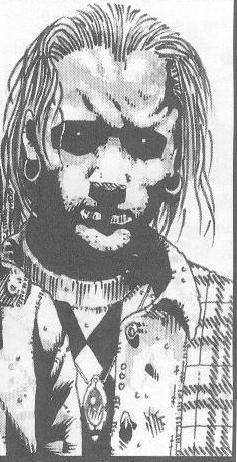Varro Senex

Sobriquet: Marcus Terentius Varro or Varro Reatinus
Appearance: Currently, Varro wears the face and form of the amnesiac Tremere antitribu Jacob the Glitch.
Behavior: The specifics of Varro's behavior remain in question as his recent actions seem erratic or more likely enigmatic.
History: Varro was born in or near Reate (now Rieti) to a family thought to be of equestrian rank, and always remained close to his roots in the area, owning a large farm in the Reatine plain, reported as near Lago di Ripa Sottile, until his old age. Politically, he supported Pompey, reaching the office of praetor, after having been tribune of the people, quaestor and curule aedile. He was one of the commission of twenty that carried out the great agrarian scheme of Caesar for the resettlement of Capua and Campania (59 BC).
During the Roman civil war he commanded one of Pompey's armies in the Ilerda campaign. He escaped the penalties of being on the losing side in the civil war through two pardons granted by Julius Caesar, before and after the Battle of Pharsalus. Caesar later appointed him to oversee the public library of Rome in 47 BC, but following Caesar's death Mark Antony proscribed him, resulting in the loss of much of his property, including his library. As the Republic gave way to Empire, Varro gained the favor of Augustus, under whose protection he found the security and quiet to devote himself to study and writing.
Varro studied under the Roman philologist Lucius Aelius Stilo, and later at Athens under the Academic philosopher Antiochus of Ascalon. Varro proved to be a highly productive writer and turned out more than 74 Latin works on a variety of topics. Among his many works, two stand out for historians; Nine Books of Disciplines and his compilation of the Varronian chronology. His "Nine Books of Disciplines" became a model for later encyclopedists, especially Pliny the Elder. The most noteworthy portion of the Nine Books of Disciplines is its use of the liberal arts as organizing principles.Varro decided to focus on identifying nine of these arts: grammar, rhetoric, logic, arithmetic, geometry, astronomy, musical theory, medicine, and architecture. Using Varro's list, subsequent writers defined the seven classical "liberal arts of the medieval schools."
Recent Events: Unknown...